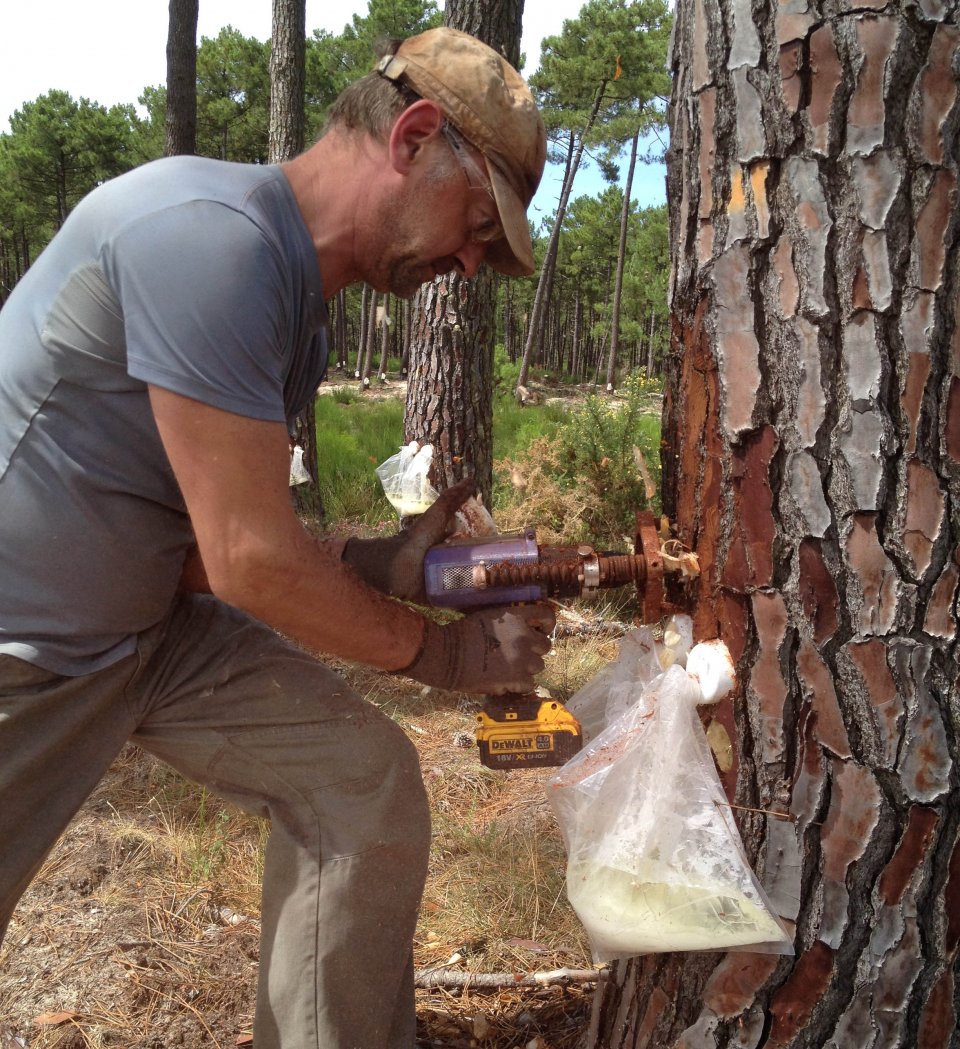
The attractiveness of the resin tapper's profession is a key point for the revival of natural resin extraction to be a success. The aim is to adapt the resin extraction method to reduce the difficulty of the resin tapper's work. In creating the Biogemme© method, Holiste has taken this aspect into account. This involves, in particular, the creation of an appropriate tool to mechanize the harvest.
The "pica de corteza" method is the method traditionally used in Spain and Portugal and which was used in France. In this method, the bark is partially removed and smoothed over an area of 20x80 cm. Two vertical lines are drawn using the "trazador" and then the collector plate and pot are installed. A narrow horizontal incision is made to expose the resin channels, the cambium is brushed: this is the tree tapping. Then, activator, usually based on sulphuric acid, is applied. On the same tree, the frequency of wounds is 2 to 3 weeks.
In the Biogemme© method, the resin tapper uses an electro-portable machine equipped with a specific cutting tool. Two carbide plates start the bark until it touches the cambium. At each operation, two circular cares with a surface area of 45 cm² are opened. The ergonomics of the mechanization as well as a better posture facilitate the work of the resin tapper. By using an activator based on non-toxic organic acid, the resin tapper is protected from possible occupational diseases caused by sulphuric acid. Finally, the use of closed bags on a funnel adapted to the care (closed vessel harvesting) facilitates the installation of the bags and their harvesting when they are full.
The use of the machine generates dust, splinters and the acceptable noise of the engine. The resin tapper must be equipped with glasses and earplugs. The resin extraction tool is equipped with a stabilizer that gets stuck in the bark to prevent twisting and the resin tapper is equipped with thigh plates to carry it below the waist limiting back weight. Also, when moving from one tree to another, he must be able to attach the machine to his belt so that he can walk without embarrassment.
In France, resin extraction is carried out only for 4 months (from June to September) depending on the hottest periods, compared to 8 months in Spain and Portugal. This is, therefore, a seasonal job. However, resin extraction can be combined with other forest activities carried out the rest of the year (sowing or planting in autumn, pruning in winter, etc.). The resin tapper does his work alone. This is an advantage because he is not dependent on another person to collect the resin but it can be a disadvantage because isolation at work can be a barrier to the attractiveness of the profession.
In order to further improve the method, Holiste, which developed this method, is taking steps to reduce the weight of the resin extraction machine. Holiste is also working on improving the ergonomics of the equipment to reduce the impact of bark dust generated by the machine and to optimize the removal of the activator. Holiste is therefore constantly looking for improvements in the working conditions of resin tappers.
